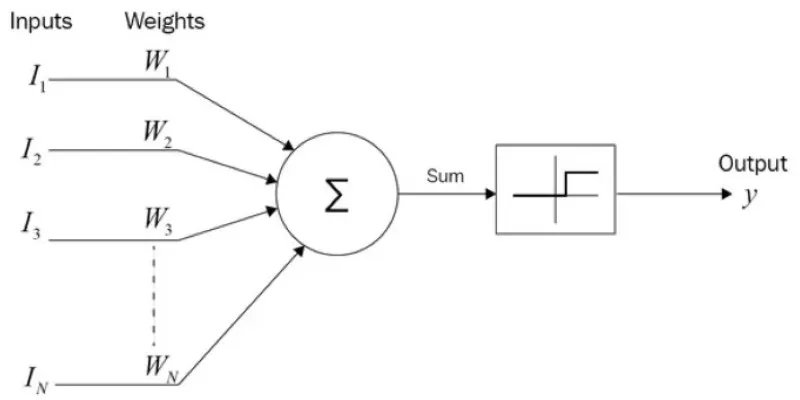Finance has always been a numbers game, but today, those numbers aren’t just crunched by analysts—they’re processed by intelligent algorithms that learn, adapt, and predict. Machine learning is revolutionizing the financial world, from fraud detection to stock market predictions, making decisions faster and smarter than ever before. It’s no longer just about historical trends; it’s about real-time insights that evolve with the market.
But what exactly makes machine learning so powerful? How do these systems work, and why are financial institutions investing heavily in them? Let’s break down the core concepts behind this technology and its growing influence in finance.
The Core of Machine Learning Concepts
At its core, machine learning is about teaching computers to recognize patterns and make decisions based on data. Unlike traditional programming, where a developer explicitly codes every rule, machine learning allows systems to improve automatically by learning from experience. In finance, this translates to algorithms that scan enormous volumes of historical data to identify patterns, spot anomalies, and predict future results.
The most common machine learning techniques applied in finance are supervised learning, unsupervised learning, and reinforcement learning. Supervised learning is the most frequently used, in which algorithms are trained on labeled financial data. A basic example is forecasting if a loan applicant will default based on records. The model is trained from available customer data and uses that knowledge to make forecasts for new applications.
Unsupervised learning, however, works with unstructured data whose patterns are not readily apparent. It is applied in activities such as market segmentation, where banks categorize customers according to what they spend and their credit status. This makes banks provide more customized services without pre-labeled training data.
Reinforcement learning is less common in finance but useful nonetheless. It is a trial-and-error method by which an algorithm learns from its environment, always refining its strategy to optimize reward. Hedge funds and trading companies apply reinforcement learning to evolve strategies that evolve dynamically with market conditions.
How Financial Algorithms Leverage Machine Learning?
Machine learning in finance isn’t just theoretical—it powers some of the most critical financial systems today. Banks, investment firms, and insurance companies rely on it to process vast amounts of information quickly and efficiently.

One major application is credit scoring. Traditional credit risk assessment relied on fixed formulas and historical records, but machine learning algorithms now analyze alternative data sources, such as transaction histories and even social behavior. This results in more accurate risk assessments, allowing financial institutions to approve loans more effectively while minimizing defaults.
Another key area is fraud detection. Machine learning models analyze billions of transactions, spotting irregularities that humans might miss. These systems continuously learn from new fraud cases, making them far more effective at identifying suspicious activity than static rule-based methods.
Predictive analytics also play a central role in algorithmic trading. Financial markets generate enormous amounts of data every second, making it impossible for humans to process everything in real time. Machine learning models digest this data, looking for trends and opportunities that traders can exploit. High-frequency trading firms use these models to execute trades at lightning speed, capitalizing on minor price fluctuations.
Beyond trading, financial institutions use machine learning for customer service automation. Chatbots and virtual assistants powered by natural language processing (a branch of machine learning) handle customer inquiries, reducing operational costs while improving service quality.
Data-Driven Models and Their Impact on Financial Decision-Making
Machine learning has revolutionized financial decision-making by enabling data-driven models that continuously evolve, providing deeper insights and greater accuracy.
The Power of Data-Driven Models in Finance
Machine learning-driven models process vast datasets, identifying trends and making informed financial decisions. Unlike static methods, these models adapt over time, improving accuracy with new data. Financial institutions leverage them to detect patterns, predict outcomes, and refine strategies. This continuous learning process enhances efficiency, reduces errors, and allows businesses to navigate the complexities of modern financial markets with greater precision and agility.
Enhancing Risk Management
Risk assessment in finance has evolved with machine learning, offering real- time insights into economic and market conditions. These models analyze vast datasets, identifying potential threats like credit defaults or regulatory risks. By leveraging predictive analytics, banks can anticipate downturns, adjust investment strategies, and enhance financial stability. Machine learning transforms risk management, enabling institutions to make proactive decisions and minimize losses with data-driven precision.
The Role of Machine Learning in Portfolio Management
Machine learning reshapes portfolio management through robo-advisors, optimizing investments based on data-driven insights. These AI-powered systems analyze historical trends, assess risk tolerance, and recommend asset allocations. Unlike human advisors, robo-advisors process vast information instantly, offering objective, real-time strategy adjustments. This automation reduces biases, minimizes emotional decision-making, and helps investors manage portfolios more effectively, making financial planning more accessible and cost-efficient.
Detecting Market Manipulation with Machine Learning

Machine learning algorithms detect fraudulent trading activities by analyzing vast transaction patterns. Market manipulation, like insider trading and spoofing, leaves digital traces that AI can identify in real time. These models enhance financial security, helping regulators and firms prevent fraud before significant losses occur. By automating surveillance and identifying irregularities, machine learning improves market transparency and reduces illicit activities in global financial systems.
Challenges and Limitations of Machine Learning Models
Despite its advantages, machine learning in finance faces challenges, including data biases and algorithmic transparency issues. Black-box models make decision-making difficult to interpret, raising concerns about accountability. Biased training data can result in flawed predictions, leading to potential financial risks. Institutions must prioritize fairness, diverse datasets, and explainable AI techniques to ensure ethical, accurate, and reliable financial decision-making with machine learning applications.
Conclusion
Machine learning has reshaped finance by enabling smarter decision-making, risk management, and fraud detection. Its ability to process vast datasets and recognize patterns has revolutionized investment strategies and financial operations. While challenges like algorithmic bias and transparency exist, the benefits outweigh the risks. Financial institutions leveraging machine learning gain a competitive edge in efficiency and accuracy. As technology advances, machine learning will continue to drive financial innovation, making it an essential tool for the industry’s future growth.
 zfn9
zfn9






















